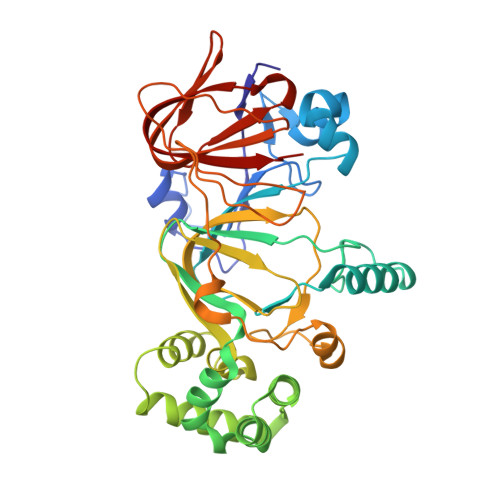Crystal Structures of Mannose 6-Phosphate Isomerase from Salmonella Typhimurium Bound to Metal Atoms and Substrate: Implications for Catalytic Mechanism
Sagurthi, S.R., Gowda, G., Savithri, H.S., Murthy, M.R.N.(2009) Acta Crystallogr D Biol Crystallogr 65: 724
- PubMed: 19564693
- DOI: https://doi.org/10.1107/S0907444909013328
- Primary Citation of Related Structures:
2WFP - PubMed Abstract:
Mannose-6-phosphate isomerase (MPI) catalyzes the interconversion of mannose 6-phosphate and fructose 6-phosphate. X-ray crystal structures of MPI from Salmonella typhimurium in the apo form (with no metal bound) and in the holo form (with bound Zn2+) and two other structures with yttrium bound at an inhibitory site and complexed with Zn2+ and fructose 6-phosphate (F6P) were determined in order to gain insights into the structure and the isomerization mechanism. Isomerization involves acid/base catalysis with proton transfer between the C1 and C2 atoms of the substrate. His99, Lys132, His131 and Asp270 are close to the substrate and are likely to be the residues involved in proton transfer. The interactions observed at the active site suggest that the ring-opening step is probably catalyzed by His99 and Asp270. An active-site loop consisting of residues 130-133 undergoes conformational changes upon substrate binding. Zn2+ binding induces structural order in the loop consisting of residues 50-54. The metal atom appears to play a role in substrate binding and is probably also important for maintaining the architecture of the active site. Isomerization probably follows the previously suggested cis-enediol mechanism.
Organizational Affiliation:
Molecular Biophysics Unit, Indian Institute of Science, Bangalore 560 012, India.















